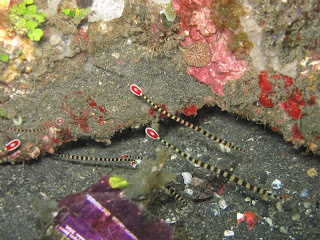The history of Ethiopia is full of colourful tales, perhaps a bit embellished over the centuries. A massive church hewn from a single rock in little more than 24 hours by an impressively strong woman (with a little help from some Angels). The location of the original Ark of the Covenant – that nobody is allowed to see – and how Ethiopia was chosen by God to guard it. Promises of great armies sent to help Europeans fight the Crusades. Some, like this latter one, are clearly fairytales in hindsight, but centuries of religious homogeny (in northern Ethiopia), have left a very rich and colourful history.
Our first stop was Bahir Dar, a small city on the edge of Lake Tana (source of the White Nile river). About 300-400 years ago, nearby Gondar was the capital of the Ethiopian kings, and Bahir Dar became known for its monastaries dotted around the lake. Not to mention thousands of pelicans and other interesting birds.

Ethiopian christianity is considered one of the “oldest” versions of extant christianity, perhaps because Ethiopians are very persistant when it comes to resisting change. Since about the 4th century AD, when followers of Jesus Christ first arrived in Ethiopia, little seems to have changed. Even the old calendar is still in use – it was the month of Megabit and the year 2002 while I was there. The rest of the world has gradually abandoned this old calendar in favour of how the Roman Catholic popes frequently re-interpreted the calendar – last changing it about 500 years ago. Even the time of day is different. A day is 24 hours long, but switches at 6:00am (western time), so sunrise falls at 'midnight' and sunset at 'noon'. Hence there's no need for AM and PM – there's 2:00 in the daytime (=8am), and 2:00 at night (=8pm). Once you get used to it, and it doesn't take much more than setting your watch to be 6 hours slow, this actually makes a lot more sense than the time that we're used to.
Even the Ethiopian Fairytale is alive and well, although in a slightly more sinister modern form. In Bahir Dar, this manifested itself in the blatant lying we constantly encountered when trying to organise just about anything. It's a bit sad that whereever we went, almost every tour operator, hotel manager, or “friendly” local resorted to fairytales just to get our custom. Boat operators in Bahir Dar had fancy tour programmes that included hippo-watching en-route to a monastary (the driver didn't even bother looking) and visits to the best old monastaries (one was still in the process of being built!). On leaving Bahir Dar, we were promised a minibus full of faranjis (foreigners) who hired a bus that would go direct to Gondar (as expected, we never saw a single faranji and stopped in just about every small town in-between). Unfortunately, unless one can speak/read Amharic (a devilishly difficult language from an English-speaking viewpoint) or pay for a local “guide”, living these fairytales is unavoidable.

But, as was the Ethiopian theme, the modern fairytales are easily offset by their historical counterparts. On the Zege peninsula near Bahir Dar, we visited a 16th century monastary (Ura Kidane Mihret) that has withstood time (and constant use). Old religious manuscripts from the 8th century were still being read by white-robed priests. Similar to
Borobudur (in Indonesia), which featured stone murals relating the life of Buddha and tales from the Buddha's past lives, this monastary featured colourful painted murals relating the life of Jesus and other key biblical stories on every square metre of the central shrine. Most of these were painted about 250 years ago, but some fragments of the original paintings still existed thanks to the dry environment.

Up the road in Gondar, the former capital, the old royal enclosure rivals any castle in Europe. Built over about 100 years by successive kings, the tales of succession (fratricide seems to be the quickest route to the throne) add the necessary royal scandal.

The highlight of this area, however, was a small 18th century timber church (Debre Berhan Selassie) up on the hill above Gondar. Not only was the local priest a genuinely friendly man, with an unassailable pride towards his church, but the paintings inside covered more than just the central shrine and had a handcrafted quality that made it seem like the Sistene Chapel of Ethiopia. Hundreds of angels peered down from the ceiling rafters, each one slightly different in complexion and size. According to the historical fairytale, this church would have been destroyed by invading Sudanese dervishes in the mid 19th century, were it not for a swarm of bees that greeted them at the gate. And as we saw later in Lalibela, this wasn't the first time that bees sent by God have featured in an Ethiopian Fairytale.
 Pictures (from top)
Pictures (from top)
1 - Pelican on Lake Tana
2 - Original murals from Ura Kidane Mihret
3 - Current 19th century murals on the shrine of Ura Kidane Mihret
4 - Gondar Royal Enclosure (Fasillias' Palace on the right). Much of the destruction was actually caused by British bombing of the enclosure during World War II (the Italians used part of it as a base).
5 - The ceiling rafters in Debre Berhan Selassie Church, Gondar
















.JPG)








